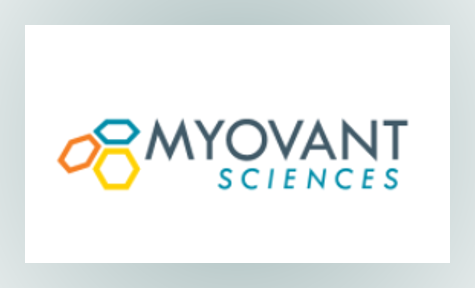
February 11, 2020
BIOINVEST NEWS: Myovant (MYOV)
Relugolix Uterine Fibroids Data Highly Competitive; NDA Filing In April – BUY
A very positive long-term follow-up (88% response rate) from the LIBERTY trial was released yesterday and we believe continues to further solidify relugolix in uterine fibroids (UF). Management will file for an NDA for the use of relugolix+ABT in UF in April (plus a separate filing for the treatment of relugoxi in prostate cancer in Q2:20). For relugolix in endometriosis, we expect MYOV to report the Phase III trials SPIRIT 1 & 2 in Q1:20 and Q2:20, respectively. Taken together, Myovant has one of the busier late-stage clinical and regulatory event calendars in the first half of 2020. MYOV is a Top Recommendation for 2020.
Long-term Follow-up Supports Six-Month UF Data
Myovant announced LIBERTY-3 extension trial of relugolix+ABT in patients with heavy menstrual bleeding associated with uterine fibroids. The 24-week LIBERTY-1 and LIBERTY-2 pivotal trials that were disclosed last year were extremely positive and competitive with both ABBV’s Orlissa (and ObsEva’s linzagolix). The LIBERTY-3 extension trial followed patients who had completed either study for one year. The response rate of 87.7% in LIBERTY-3 is nearly identical to that of the ABBV ELARIS UF-EXTEND trial (87.9%) of elagolix+ABT, which should allow for Myovant to compete effectively with AbbVie on efficacy. Further adding to MYOV’s competitive advantage, a key safety aspect of relugolix in LIBERTY-3 – notably bone mineral density (BMD) – remained consistent at one year of treatment. Competing medications cause increasing losses in BMD over time. In our view, this milder safety further broadens relugolix’s therapeutic index versus Orlissa. Add in its once-a-day dose (vs. twice daily for Orlissa), relugolix keeps looking better than the competition.
Efficacy – As Good As Orlissa
In the primary endpoint analysis, 87.7% of women achieved the responder criteria defined as a menstrual blood loss volume of less than 80 mL and a 50% or greater reduction from baseline in menstrual blood loss volume during the last 35 days of treatment measured using the alkaline hematin method. The one-year primary endpoint result in the LIBERTY open-label extension study demonstrated durability of the response observed in LIBERTY 1 and 2. In addition, women experienced, on average, an 89.9% reduction in menstrual blood loss from baseline at one year.
Safety – Maybe Better
Changes in bone mineral density through one year, as assessed by dual energy x-ray absorptiometry (DXA) every three months, were consistent with those in LIBERTY 1 and 2. The incidence of adverse events over one year was consistent with that observed in LIBERTY 1 and 2, with no new safety signals observed. Adverse events reported in more than 10% of women treated with relugolix combination therapy for one year and more frequent than those reported in the placebo group after 6 months included only hot flash. There were no pregnancies reported in the relugolix combination therapy group.
Complete results will be submitted for presentation at a future scientific meeting and publication in a medical journal.
Conclusion – 2020 Off To A Great Start With More On The Way – The excellent long-term uterine fibroids data announced today is just one of at least five positive important catalysts for relugolix due in Q1 and Q2:20.
With ABBV’s Orlissa paving the way and both growing the market and educating physicians/insurers for both endometriosis (current indication) and UF (it’s approval is due in Q2:20), by the time relugolix is approved in 2021 we believe MYOV will immediately garner meaningful share with its once-a-day pill (vs. two for Orlissa). MYOV is a Top Pick for 2020. We recommend subscribers take advantage of MYOV shares at current levels that we believe reflects the Orlissa’s early modest sales trends (which will still more than double to over $200 million in 2020 vs. 2019).
